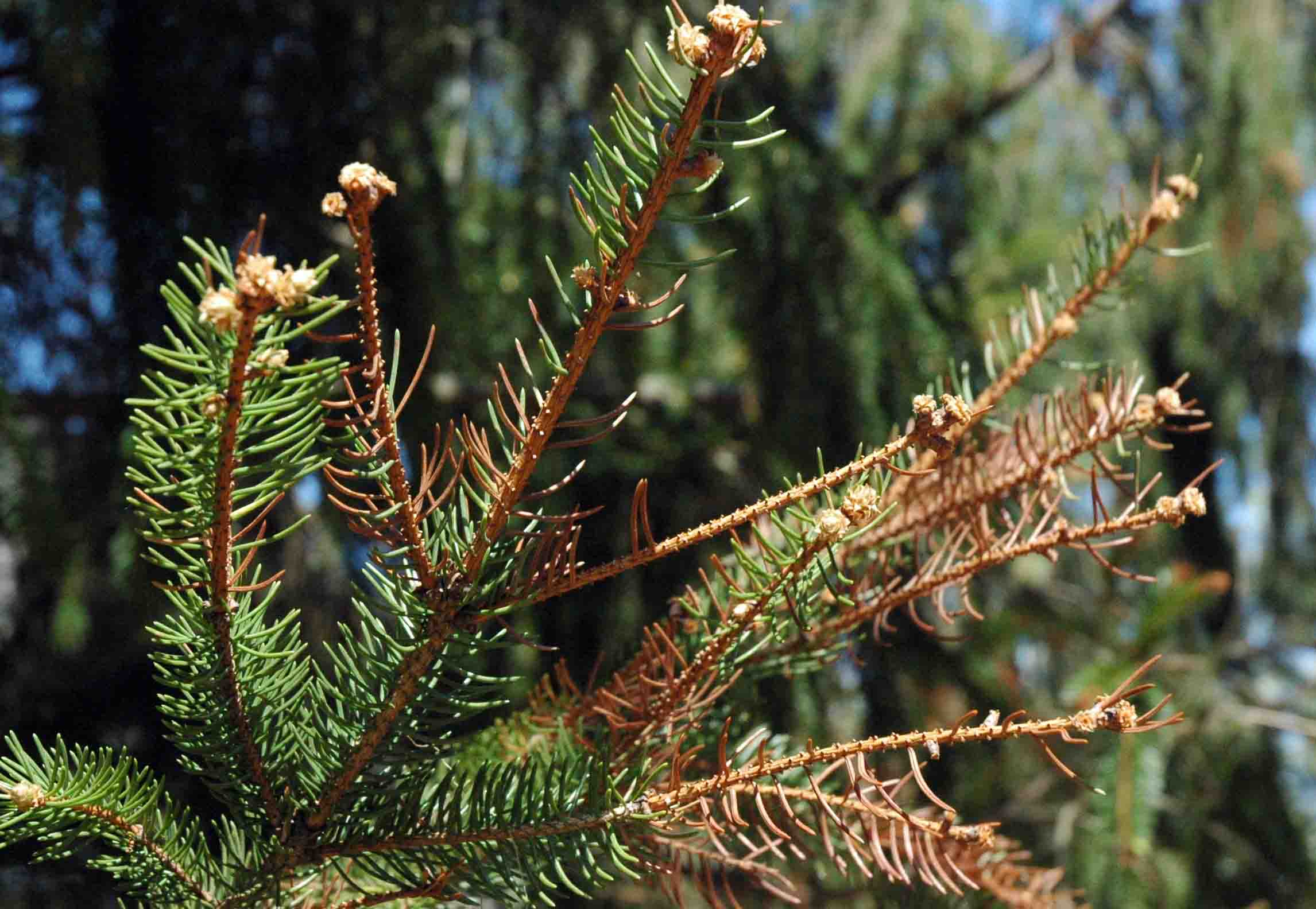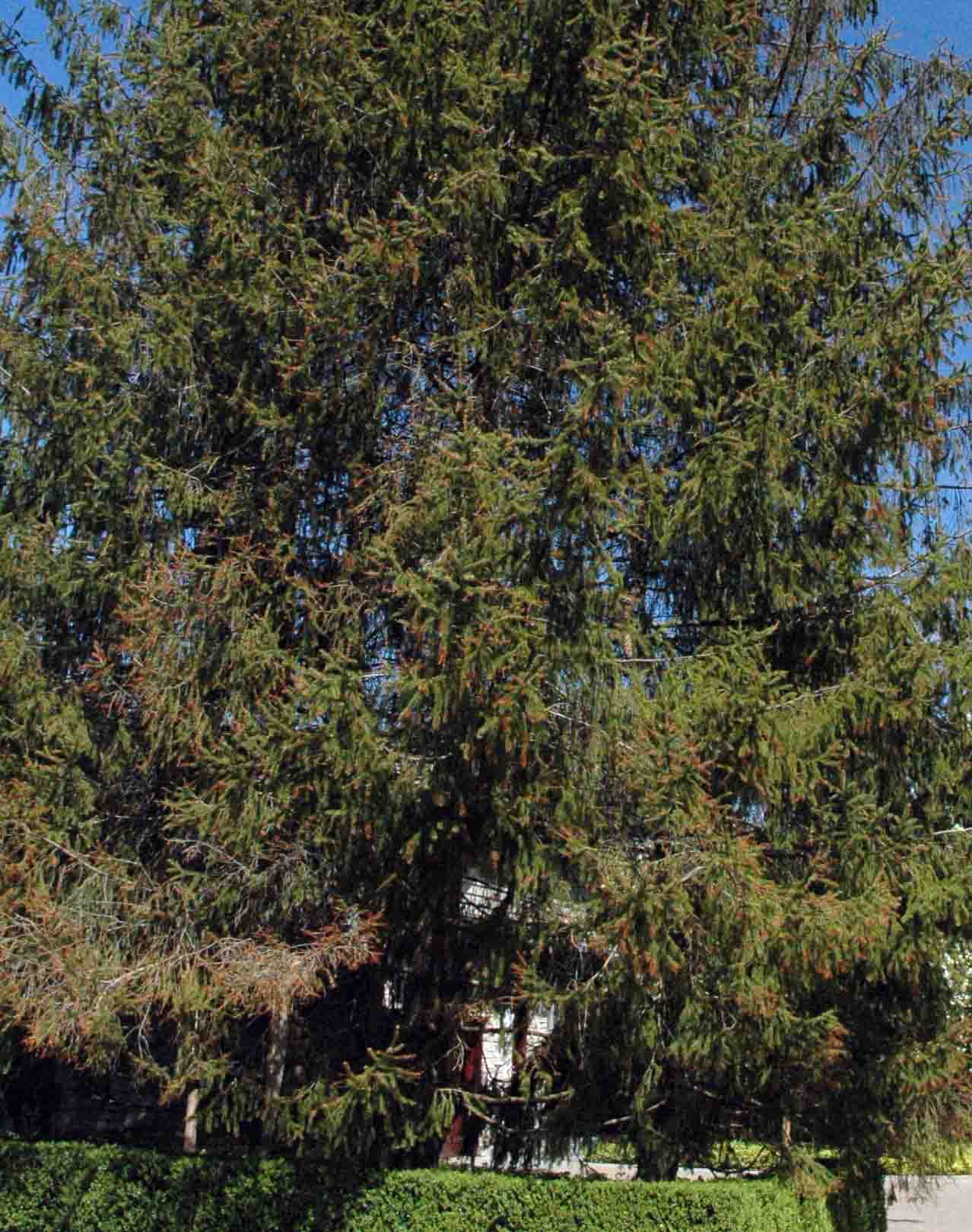With the advent of Spring comes a myriad of calls on distressed plants from homeowners, nurseries and landscapers. One of our better tree service companies (I’ll call the owner/operator ‘Mark’ to protect his clients’ identities) in southeastern Michigan called with a series of problems this spring so I decided to take drive over and get a first hand look. We looked at several problems on plants ranging from trees to ground covers but there soon emerged an consistent thread: overwatering. Plant problems related to overwatering and poor soil drainage are among the most common landscape issues I see year in and year out. The stops I made with Mark last week were typical. Mark works in several very affluent suburbs around Detroit (I know readers around the country don’t associate Detroit and affluence, given our recent press, but there is still some serious money in the area). Some of Mark’s clients spend up to $20,000 per year just to maintain the trees and shrubs on their property – that’s not including lawn maintenance. Needless to say, these folks want everything perfect. In their effort to have their landscape look more perfect than the neighbors, the homeowners and their gardeners often go overboard – especially with irrigation. One of the things that caught my attention during our site inspection was recurring issues with Norway spruce. For the most part, we regard Norways as a cast iron plant and one of the last trees with which we’d expect to have problems. Yet we saw several instances were established specimens were suffering needle die-back and declining.

In each case the trees were irrigated in situations where they would likely grow well without supplemental watering. But the trees were surrounded by ground covers or annual beds with heavy soils that were heavily irrigated. Problems usually increased on down-slope positions.

The solution? Back off the irrigation. Everyone knows trees need water, but roots their roots also need oxygen. At one site we visited, the homeowner already had his gardener running the irrigation system – in April! This is truly killing with kindness. Most established landscape trees, shrubs and perennials in this part of the world need little, if any, irrigation. Newly planted trees and shrubs need an occasional (weekly to bi-weekly) drink in the first year and some follow-up the second year. After that they can manage most years on our rainfall. In the end, a lot comes down to design. Establish thirsty annual beds where they can be irrigated without drowning hardier trees and shrubs.

I always imagine my trees greedily sucking up all the water and depriving the other, smaller plants. I never knew it was possible to overwater something so large.
If they HAD to have annual beds under the spruce, couldn’t they back off on the water so that both were happy? Watering so much that the tree roots don’t have oxygen would almost certainly (in my mind) mean the annuals are overwatered too – unless they’re growing papyrus under there :).
D’oh! You just said that. I missed the “thirsty” part of your recommendation to move annual beds. Sorry.
Overwatering is a new concept to me. I always maintain a distance between trees and flowerbeds. or plant smaller ones in pots.
Yes, depending on your local climate most established trees can manage fine without irigation. Some exception would be trees in containers and other, resticted root zones.
Cindy, you might be interested in some research by Todd Dawson at UC Berkely that demonstrated a phenomenon known as ‘hydraulic lift’, whereby large trees bring up water from deep in the soil profile that becomes availble to smaller herbaceous plants. Not enough room here – I’ll describe it in more detail in a later blog post.